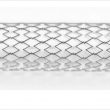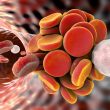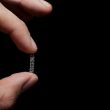According to a recent study published in Circulation Cardiovascular Interventions, screening for coronary artery disease (CAD) with an invasive coronary angiography (as part of the protocol prior TAVR) and performing PCI and TAVR in the same session, has no impact on periprocedural safety or on long term outcomes. Study outcomes offer new hope, especially as regards using TAVR...
Self-Expanding Stents Are Superior to Balloon-Expandable Stents in the Iliac Arteries
Courtesy of Dr. Carlos Fava. Severe atherosclerotic disease in iliac arteries is experienced by 15% of all men and 5% of all women. TAC II recommends angioplasty for type-A, -B, and -C lesions. As regards stent type, self-expanding stent (SE, more elasticity) vs. balloon-expandable stent (SB, more radial strength), Reekers indicates superior target lesion revascularization (TLR) with SE. However, there...
Risk of Thrombosis and Bleeding with Peripheral Artery Disease and Concomitants
Peripheral artery disease (PAD) is no longer a systemic manifestation of atherosclerosis. In fact, 2 in 3 people with PAD have concomitant heart disease, and 1 in 3 people has concomitant PAD. To understand the real dimension of this problem, we should know that PAD patients have 60% more risk of acute myocardial infarction...
BVS: Controvertial Scaffold
Courtesy of Dr. Agustín Vecchia. The advent of resorbable vascular scaffolds (BVS) generated high expectations among interventionists because of its potential advantages over bare metal stents. However, when comparing BVS against the Xience stent, we observed an increased rate of events associated to the first device, to their detriment. Among the reasons behind this poor...
Leaders Free ACS: Good Results for the Polymer-Free Stent at 2 Years in ACS
Courtesy of the SBHCI. Guidelines recommend dual antiplatelet therapy for a year in patients admitted with coronary acute syndrome. However, patients at high risk for bleeding who receive coronary angioplasty have been historically excluded from studies. The new polymer-free stent BioFreedom allows for the reduction of dual antiplatelet therapy time, due to rapid drug elution...
Plaque protrusion in carotid artery stenting: what are its risks and how can we prevent them?
Courtesy of Dr. Carlos Fava. Carotid artery stenting (CAS) has proven to be effective in high-risk patients. Nowadays, when performed by trained operators, its results are similar to those of surgery. This study seeks to clarify the incidence and prognosis of plaque protrusion through the stent (as observed in both control angiography and intravascular ultrasound [IVUS])...
Follow-up at 10 years for invasive vs. conservative strategy for non-ST-segment elevation infarction
The ICTUS (Invasive Versus Conservative Treatment in Unstable Coronary Syndromes) trial compared early invasive strategy with a selective invasive strategy in patients with non-ST-segment elevation acute coronary syndrome (NSTE-ACS), with elevated markers such as cardiac troponin T. The absence of long-term benefit of an early invasive strategy at 1 and 5 years had already been reported....
Peripheral artery disease associated to ischemic and bleeding events after DES implantation
Patients with peripheral artery disease (PAD) have higher rates of cardiovascular events after DES implantation, which could be explained partly by higher platelet reactivity. The present work studies the relationship between platelet reactivity and clinical events after PCI in patients with and without a history of peripheral artery disease. The ADAPT-DES study (Assessment of...
Bioresorbable scaffolds with drug-eluting stents: do they entail a higher thrombosis risk?
Courtesy of Dr. Leiva. Bioresorbable scaffolds with drug-eluting stents (bioresorbable vascular scaffolds, BVS) have been added to the list of endovascular treatment options for coronary disease. The ABSORB III trial showed the non-inferiority of this stent type to everolimus-eluting metallic stents as regards target-lesion revascularization (TLR) at one year. However, reports have suggested a higher...
Percutaneous Mitral Annuloplasty: First Results in Humans
Courtesy of Dr. Agustín Vecchia. In the last few years, new percutaneous treatment options for mitral regurgitation have emerged. Transcatheter mitral annuloplasty with various devices is a relatively simple procedure that could compress the origin of circumflex artery branches due to the different orientation of mitral corners and the coronary sinus. The following work by Park...









